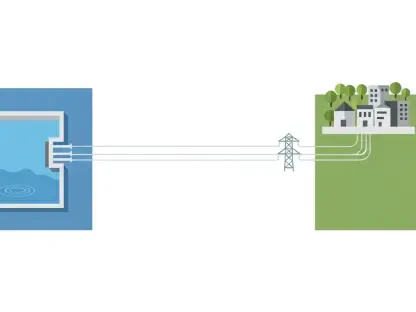Choosing the right patio door for your home is a significant decision that impacts not only the aesthetic appeal but also the energy efficiency of your living space. Energy efficiency is a vital consideration, especially in regions with extreme weather conditions. We’ll delve into the differences between sliding and bi-fold patio doors to help you make an informed choice.
Functional Differences and Space Considerations
The operational mechanisms of sliding and bi-fold patio doors are quite distinct, each offering unique advantages and limitations to homeowners. Understanding these differences is essential to making the best choice for your home.
Sliding Doors: Space-Saving Champions
Sliding doors operate along a horizontal track, allowing them to open and close within a limited space. This makes them an excellent choice for areas where space conservation is crucial. Their smooth operation and the ability to maximize the view without hindrance are notable benefits. However, sliding doors provide a limited opening, which may restrict the indoor-outdoor flow.
Another advantage of sliding doors is their capability to seamlessly blend with the overall architecture of a home without demanding additional space. Their unobtrusive nature makes them particularly well-suited for modern households where maximizing interior space is a priority. However, the trade-off comes with the inability to open the entire door space, limiting accessibility and potentially impacting natural ventilation.
Bi-Fold Doors: Expansive and Opulent
In contrast, bi-fold patio doors work by folding panels to the side, creating a wide, unobstructed opening that effortlessly merges indoor and outdoor environments. While this feature is aesthetically pleasing and ideal for entertaining, it demands more space to accommodate the folded panels. The ability to fully open the space can also enhance natural lighting and ventilation within the home.
The visual appeal of bi-fold doors cannot be understated; they often become a focal point in a home’s design, enhancing both indoor and outdoor areas. This transformative feature is particularly beneficial for hosting large gatherings, as it creates a cohesive environment for entertaining. However, the necessity for additional space when opening the doors might be a limiting factor for homes with tighter layouts.
Energy Efficiency: Insights from Matt DiBara
Energy efficiency is a fundamental aspect when comparing these two door types, with several factors influencing their performance. Matt DiBara, a fourth-generation contractor, provides valuable insights into the energy efficiency of sliding and bi-fold patio doors.
Sliding Doors and Superior Seals
According to Matt DiBara, sliding doors tend to be more energy-efficient because of their tight seals and reduced gaps. This design minimizes air exchange between the indoors and outdoors, which helps maintain consistent indoor temperatures. The sliding mechanism usually involves fewer moving parts, reducing the potential for air leaks.
The superior sealing of sliding doors plays a critical role in energy conservation, as it significantly reduces the amount of uncontrolled air leakage. This capacity to maintain a stable indoor climate leads to lower heating and cooling costs, making them a highly practical choice for homeowners seeking energy efficiency. Nevertheless, the effectiveness of sliding doors is also influenced by the quality of materials and the precision of installation.
Challenges with Bi-Fold Doors
Bi-fold doors, while visually impressive, present more challenges in achieving optimal insulation. The numerous panels and hinges increase the likelihood of gaps and air leaks, potentially compromising energy efficiency. Nevertheless, the quality of materials and precision in installation can mitigate some of these drawbacks.
The complexity of bi-fold doors introduces a greater risk of imperfections during installation, which can lead to decreased energy performance. Despite this, advancements in door technology and materials have improved their insulation capabilities. Homeowners who prioritize aesthetics and integration with the outdoors might find the energy trade-off acceptable, provided they invest in high-quality bi-fold doors and professional installation.
Financial Implications of Energy Efficiency
Choosing energy-efficient patio doors can have notable financial benefits for homeowners, impacting their energy bills and overall home comfort. The long-term financial implications of sliding and bi-fold doors must be considered against their initial costs.
Savings through Sliding Doors
Opting for sliding doors with superior insulation can lead to significant energy savings. DiBara suggests that energy-efficient sliding doors can reduce energy bills by 10% to 20% over time. This percentage varies based on factors like geographic location, existing home insulation, and the climate.
Investing in energy-efficient sliding doors can produce substantial returns over time through reduced heating and cooling costs. In regions with harsh winters or hot summers, the insulation properties of sliding doors become particularly advantageous. However, homeowners should weigh the initial investment against long-term savings to ensure the benefits align with their financial plans and energy conservation goals.
Balancing Costs and Benefits
While bi-fold doors may incur higher initial costs and potentially lower energy efficiency, their aesthetic contributions can increase the overall value of a home. Homeowners must weigh the long-term financial savings against the immediate benefits of enhanced aesthetics and open living spaces.
The decision to choose bi-fold doors often involves a balance between their visual appeal and their financial impact. While they may not offer the same level of energy savings as sliding doors, the added value from improved aesthetics and functional versatility can justify the investment for many homeowners. Considering how the doors integrate with the home’s design and how they align with the homeowner’s lifestyle is crucial in making an informed decision.
Maintenance and Operational Considerations
Both sliding and bi-fold doors come with their own set of maintenance needs and operational challenges that should be factored into the decision-making process. Understanding these needs can help ensure the longevity and optimal performance of your patio doors.
Maintenance Needs of Sliding Doors
Sliding doors generally require less maintenance compared to bi-fold doors. Their simpler design results in fewer components that could wear out or need adjustment. However, the track on which the door slides can accumulate dirt and debris, necessitating regular cleaning to ensure smooth operation.
Routine maintenance for sliding doors is relatively straightforward and involves ensuring the track remains clean and free from obstructions. This simplicity is a significant advantage, particularly for busy homeowners who might not have the time for extensive upkeep. Despite their durability, it is essential to periodically check seals and mechanisms to maintain their energy efficiency and operational smoothness.
Bi-Fold Doors: Higher Maintenance Demands
Bi-fold doors have multiple panels and hinges, which means there are more parts that may require attention over time. Regular maintenance is critical to keep the doors functioning smoothly. Ensuring that the panels and hinges are in good condition helps maintain both the visual appeal and operational efficiency of bi-fold doors.
The complexity of bi-fold doors necessitates a more rigorous maintenance schedule to address issues such as hinge alignment and panel movement. This increased maintenance demand can be a deterrent for some homeowners. However, those who are willing to invest the time and effort can enjoy the expansive, open feel that bi-fold doors provide. Proper upkeep ensures that these doors continue to function smoothly and maintain their energy efficiency.
Pros and Cons Overview
Every type of patio door comes with its own set of advantages and disadvantages, which need to be carefully considered based on the homeowner’s priorities. Evaluating these pros and cons holistically ensures a choice that fits both practical needs and personal preferences.
Pros and Cons of Sliding Doors
Sliding doors offer numerous benefits, such as space efficiency, lower maintenance, and enhanced energy efficiency due to their tight seals and fewer gaps. These advantages make them an excellent option for compact areas and modern homes. However, they do have some limitations, including a restricted opening that may affect ventilation and the necessity for regular track maintenance.
Sliding doors’ ability to tightly seal and provide a clear view without demanding additional space makes them highly practical for many settings. Yet, the fact that only one side of the door typically opens can be a drawback for those who value greater accessibility and ventilation. Despite this, the benefits of lower maintenance and enhanced energy efficiency often outweigh these limitations for many homeowners.
Pros and Cons of Bi-Fold Doors
Bi-fold doors bring a unique set of advantages, including their aesthetic appeal, ability to allow more natural light, and the creation of a seamless indoor-outdoor living space perfect for entertaining. Nevertheless, these doors require ample space for panel folding and entail higher maintenance. Furthermore, they tend to be less energy-efficient due to the potential for air leaks from multiple panels and moving parts.
The open, airy feel provided by bi-fold doors can transform living spaces, making them ideal for homes with expansive outdoor areas. However, the need for more space and increased maintenance efforts must be taken into account. While some may view the energy efficiency challenges as a drawback, high-quality materials and expert installation can offset these issues, making bi-fold doors a viable option for those prioritizing aesthetics and functionality.
Expert Recommendations and User Considerations
The best patio door choice depends on individual needs, spatial limitations, and personal preferences. Expert recommendations highlight the importance of balancing these factors to find the most suitable option for each home.
Tailoring Choices to Individual Needs
Matt DiBara emphasizes that there’s no universal solution when it comes to choosing between sliding and bi-fold patio doors. Homeowners should consider their specific requirements, such as the available space, desired level of maintenance, and energy efficiency goals. Those seeking simplicity and energy savings might find sliding doors to be the ideal choice, while those attracted to the idea of opening up their living space should consider bi-fold doors despite the additional maintenance and space requirements.
The decision ultimately comes down to how each door type aligns with the homeowner’s lifestyle and design preferences. By evaluating the long-term benefits and weighing them against the immediate advantages, homeowners can select patio doors that offer both practicality and aesthetic value. Understanding the unique pros and cons of each door type ensures a choice that enhances the overall living experience.
Conclusion
Choosing the right patio door for your home is essential as it affects both the look and energy efficiency of your space. Energy efficiency is particularly crucial if you live in an area with extreme weather. Among the various options, sliding and bi-fold patio doors are two popular choices. Each has its own set of advantages and drawbacks, and your decision will ultimately depend on your specific needs and preferences.
When it comes to sliding patio doors, they are appreciated for their sleek design and ease of use. These doors glide along a track and don’t require extra space to open, making them ideal for tighter areas. They often feature large glass panels that allow abundant natural light to flood into your home, creating a bright and airy atmosphere.
On the other hand, bi-fold patio doors offer a different set of benefits. They fold back in a concertina style, providing an expansive opening that can seamlessly blend indoor and outdoor living spaces. This can be particularly appealing if you enjoy entertaining or value a more open connection to your garden or patio.
Both types of doors can be equipped with energy-efficient glass and weather-resistant seals to help manage temperature fluctuations and reduce energy costs. The right choice will depend on how you prioritize aspects such as space, usability, and design. Understanding the key differences and benefits of sliding versus bi-fold patio doors will help you make a well-informed decision that complements both your home’s aesthetics and functional needs.









